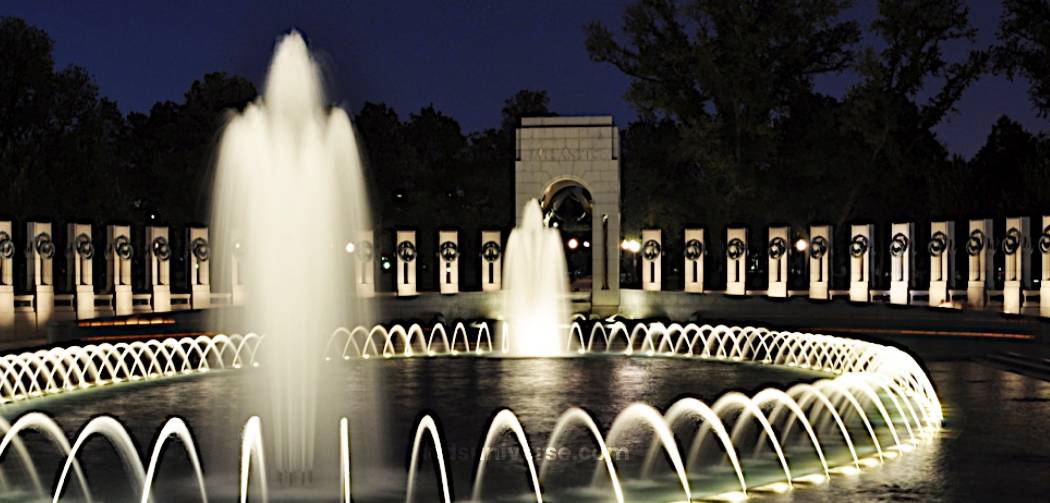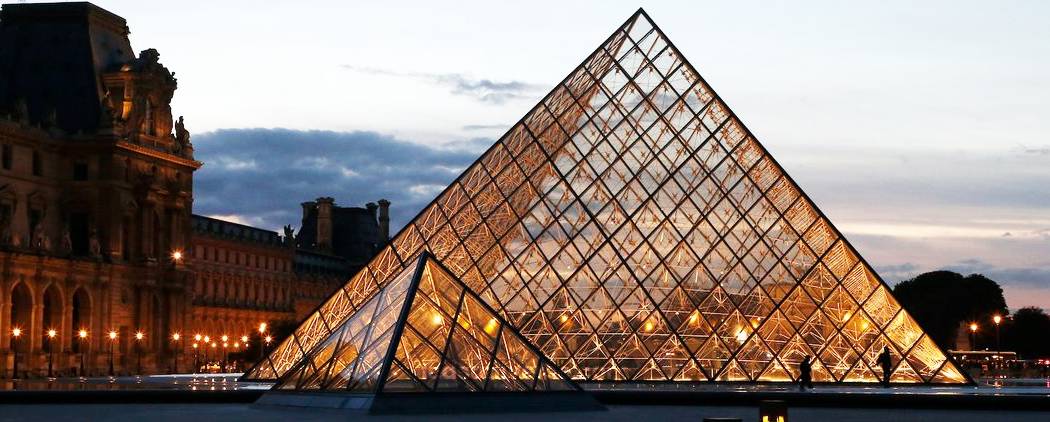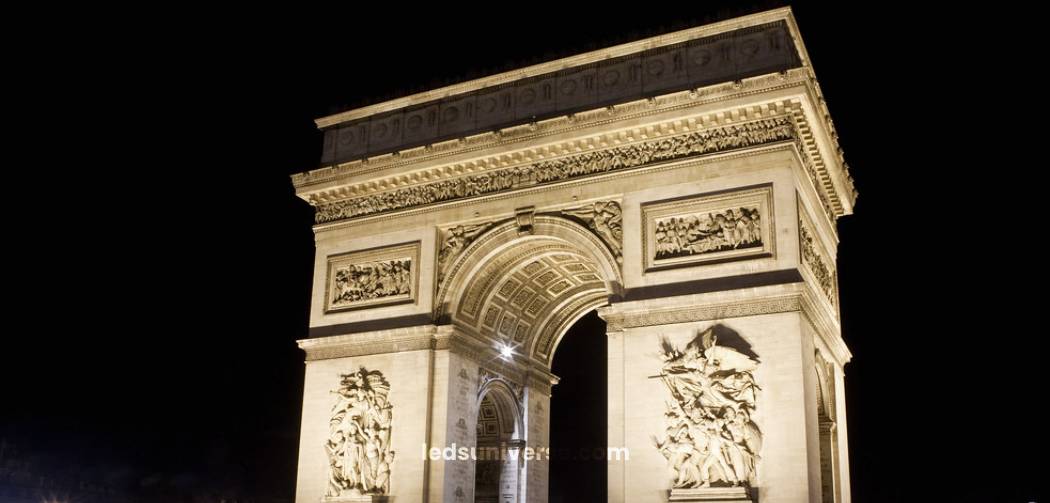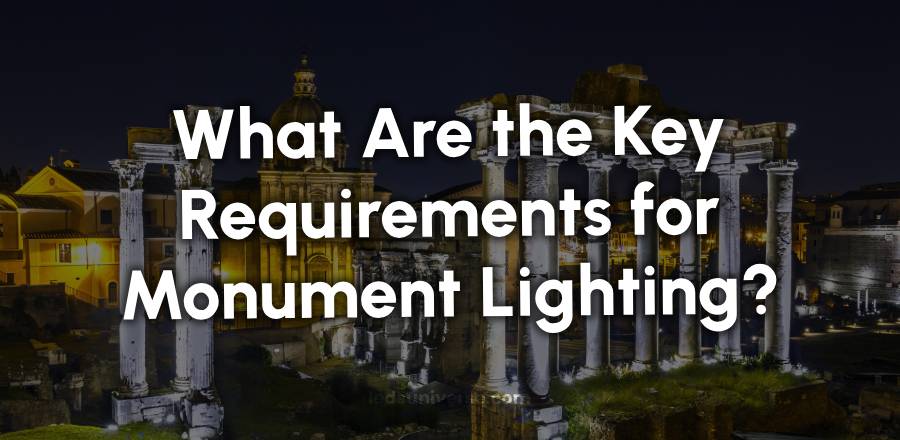Monument lighting serves as a means of emphasizing the grandeur and architectural beauty of historical landmarks, statues, and structures. Proper lighting can enhance the aesthetic appeal of monuments at night and provide a sense of grandeur and significance. When planning monument lighting, several factors come into play to ensure the desired effect is achieved while also maintaining the monument’s structural integrity.
Table of Contents
ToggleConsiderations of Monument Lighting Design
One of the primary objectives of lighting is to enhance the visual appeal of the monument. The way light is cast on a structure can completely alter its appearance. A monument may have intricate details that can be highlighted with the correct placement of light. Shadows, contrasts, and the intensity of light can all change the perception of a monument’s form. The goal is to create a balance, where the monument is beautifully illuminated, but the natural textures and materials remain apparent.
The style of lighting used plays a significant role in achieving the desired effect. Soft, diffuse lighting can create a gentle and elegant appearance, while stronger, more direct lighting can lend an imposing and dramatic look. It’s important to match the lighting style with the type and character of the monument.
Aesthetic Considerations
One of the primary objectives of lighting is to enhance the visual appeal of the monument. The way light is cast on a structure can completely alter its appearance. A monument may have intricate details that can be highlighted with the correct placement of light. Shadows, contrasts, and the intensity of light can all change the perception of a monument’s form. The goal is to create a balance, where the monument is beautifully illuminated, but the natural textures and materials remain apparent.
The style of lighting used plays a significant role in achieving the desired effect. Soft, diffuse lighting can create a gentle and elegant appearance, while stronger, more direct lighting can lend an imposing and dramatic look. It’s important to match the lighting style with the type and character of the monument.

Choosing the Right Type of Lighting
Various types of lighting can be used for illuminating a monument. The type of lighting chosen will largely depend on the style of the monument and the desired effect. Broadly speaking, floodlighting, spotlights, and architectural lighting are some of the more common types.
Floodlighting is typically used to illuminate the entire monument with a wide beam. This is ideal for large structures like buildings, towers, or statues that need to be seen from a distance. The advantage of floodlights is that they can cover a large area, but care must be taken to avoid creating overly harsh contrasts.
Spotlighting is used to focus light on specific features of the monument. This can be ideal for highlighting sculptures, inscriptions, or architectural details. Spotlights provide a concentrated beam of light, and when used correctly, they can create dramatic effects by emphasizing certain parts of the monument.
Architectural lighting incorporates lighting into the design of the monument itself. This approach blends the light fixtures with the architecture to maintain the aesthetic integrity of the structure. Lighting can be hidden in recesses or integrated into the monument’s framework to provide an elegant, almost invisible effect.
Light Color and Temperature
| Lighting Characteristic | Color Temperature | Lux Level | Pollution Level | Example Monument |
|---|---|---|---|---|
| Monument with Warm Light | Below 3000K | Low to moderate (50-200 lux) | Low | The Lincoln Memorial (Washington D.C.) – Soft, warm lighting to create a serene and inviting atmosphere. |
| Monument with Neutral Light | 3000K-4000K | Moderate (100-300 lux) | Moderate | The Statue of Liberty (New York) – Balanced lighting that gives a neutral, natural ambiance. |
| Monument with Cool Light | Above 4000K | High (300-1000 lux) | High | Eiffel Tower (Paris) – Modern and sleek lighting to highlight the intricate ironwork with a bright, cool glow. |
| Monument with Daylight | 5000K-6500K | High (500-1500 lux) | Very High | Colosseum (Rome) – Daylight-like bright lighting to emphasize the grandeur and architecture, sometimes used for large-scale illumination. |
The color and temperature of light are vital to creating the appropriate ambiance. Different light temperatures create different moods: warm light evokes a cozy, welcoming feeling, while cooler lights tend to produce a more modern and sleek appearance. For monuments made of certain materials, like stone or metal, specific light temperatures can bring out their natural tones.
The choice of color temperature also influences how the monument blends with its surroundings. A warm color temperature can make a monument feel inviting and harmonious with its environment, while cooler temperatures may give a more stark or dramatic contrast. Light color also needs to be considered in relation to the monument’s material. For example, lighting for a statue made from bronze may require a different approach than a monument made of marble.
Addressing Light Pollution in Monument Lighting
Light pollution is the overuse or misdirection of artificial light, which can interfere with natural environments, disrupt ecosystems, and obscure the night sky. In monument lighting design, it’s important to consider how the lighting will affect the surrounding environment, both in terms of energy consumption and light spill.
Minimizing Light Spill
To reduce light pollution, lighting fixtures must be designed to direct light specifically onto the monument, minimizing spillover into adjacent areas. This can be achieved with the use of shielded fixtures or glare-control technologies. Proper placement of lighting fixtures is also crucial—lights should be aimed in such a way that they do not disturb nearby residences, parks, or natural habitats.
Light Level Adjustment for Nighttime Sensitivity
Reducing the intensity of lighting at certain times of the night can help minimize its impact on the surrounding environment. By programming the lights to dim after a particular hour or adjusting the brightness based on ambient light levels, energy usage is optimized, and light pollution is reduced. These measures are especially important for monuments located in rural areas or near wildlife habitats.
Lighting Control Systems for Monuments
Modern lighting systems provide greater control over the illumination of monuments. These systems offer flexibility to adjust light intensity, color, and even the timing of the lighting, ensuring that the monument is lit appropriately for different occasions, times of day, or seasons.

Programmable Timers and Sensors
Programmable timers enable the lighting system to turn on or off at predetermined times, helping to conserve energy and reduce operational costs. Additionally, light sensors detect changes in ambient light levels, automatically adjusting the brightness of the monument’s illumination as daylight fades and nighttime arrives. This ensures that the monument remains visible without excessive brightness.
Remote Control and Automation
Many lighting systems today offer remote control and automation features. Operators can manage the lighting via a smartphone app or web interface, adjusting settings from a distance. Automated systems can adjust the lighting based on preset schedules, weather conditions, or even for special events, ensuring that the monument’s lighting adapts to different needs and circumstances.
Measuring Lux and Light Intensity
Lux is the unit used to measure illuminance—the amount of light falling on a surface. In monument lighting, determining the correct lux levels is crucial to achieve adequate visibility while preventing glare and excessive brightness.
Determining Lux Levels for Monument Lighting
The appropriate lux levels for a monument depend on the structure’s size and architectural complexity. Larger structures or those with intricate details may require higher lux levels to ensure visibility from a distance. However, it’s important to avoid over-lighting, which can result in glare and obscure the monument’s true form.
Achieving Balanced Lux for Nighttime Visibility
Proper lux levels ensure that the monument is well-lit and can be appreciated from various angles, without sacrificing the monument’s aesthetic. Too much light can distort the appearance of the structure, while too little can render it almost invisible. Achieving the right balance requires careful planning and attention to the materials and features of the monument, ensuring that the light is focused appropriately on key elements.
Environmental Impact and Sustainability
Sustainability is an important consideration when designing monument lighting. Energy-efficient lighting solutions, such as LED fixtures, help reduce the overall carbon footprint. These systems use significantly less energy while providing precise control over the intensity and direction of the light.

Reducing Environmental Impact
Efforts to reduce the environmental impact of monument lighting go beyond energy savings. Care should also be taken to minimize light pollution, as discussed previously, and ensure that the lighting is contained within the designated area. Additionally, using solar-powered lights or integrating renewable energy sources into the lighting design can further improve the sustainability of the project.
Integration with the Surroundings
The lighting should harmonize with its surroundings without overpowering them. When a monument is surrounded by natural landscapes or other structures, the lighting system should enhance, not distract, from the area’s beauty. Excessive or harsh lighting can create unnatural contrasts, while a well-thought-out lighting design can help the monument coexist with its environment, complementing the surrounding space rather than competing with it.
Long-term Sustainability Practices
In addition to the initial environmental considerations, long-term sustainability practices should be integrated into the maintenance and operation of the lighting system. Regular maintenance ensures that the lighting fixtures remain in optimal condition and continue to function efficiently. Over time, lighting systems can accumulate dust or debris, which may affect their brightness and energy consumption. Routine inspections and cleaning help maintain energy efficiency and extend the lifespan of the fixtures.
Furthermore, ensuring that the monument’s lighting system is adaptable to future technological advances is a key aspect of long-term sustainability. As LED technology continues to evolve, the possibility of upgrading the system to newer, more energy-efficient models becomes an important factor in reducing the monument’s ongoing environmental impact.
Incorporating these sustainable practices into monument lighting design not only preserves the monument itself but also demonstrates a commitment to environmental stewardship, helping to protect the heritage for future generations to enjoy.
Preservation of the Monument
While illuminating a monument enhances its beauty, the preservation of the monument itself must also be considered. Some materials, like stone or metal, can be vulnerable to the heat emitted by lighting fixtures. Over time, continuous exposure to light can cause damage or deterioration to the monument, affecting its long-term integrity.
Shielding from Excessive Heat
To protect the monument, it is essential to use lighting fixtures that minimize heat exposure. Fixtures should be designed in a way that directs light away from delicate materials, ensuring that the light does not heat the surface of the monument directly. By using low-heat or LED fixtures, the risk of thermal damage is significantly reduced, preserving the material’s structure and appearance.
Limiting Exposure Duration
Minimizing the amount of time the monument is exposed to light is another strategy to preserve its integrity. Lighting systems can be programmed to only activate during certain hours or events, ensuring that the monument is not continually subjected to artificial light. For example, automatic timers can limit the hours of operation, or motion sensors can trigger the lights only when people are nearby. This controlled exposure helps mitigate the long-term effects of lighting.
Choosing the Right Lighting Fixtures
When selecting fixtures for monument lighting, it’s vital to consider the type of material the monument is made from. Some materials, like marble or limestone, may be more sensitive to certain types of lighting. Fixtures that emit softer, diffused light are often preferable for these materials, as they reduce the risk of causing damage. Additionally, lighting systems should be designed to be as unobtrusive as possible, ensuring that they do not interfere with the monument’s natural form.
Safety and Security Considerations
Proper lighting is an integral part of ensuring safety and security for both the monument and its visitors. Effective lighting not only makes the monument visible but also helps in preventing accidents, deterring vandalism, and enhancing the security of the area surrounding the structure.
Enhancing Visitor Safety
Well-lit monuments provide a safe environment for visitors, especially in public spaces or areas where people may gather at night. Bright, clear lighting ensures that pathways, stairs, or any hazards around the monument are visible, reducing the likelihood of accidents or injuries. Additionally, strategically placed lighting along walkways or around the monument can guide visitors safely, especially in poorly lit or unfamiliar areas.
Deterring Vandalism and Crime
Security lighting plays a critical role in deterring vandalism and criminal activities around monuments. Proper illumination makes it harder for criminal activities to go unnoticed, as it increases the visibility of anyone approaching the area. Monuments located in public spaces or in areas with less natural light benefit greatly from motion-sensor lighting or timed lighting systems that provide consistent illumination throughout the night, discouraging any suspicious behavior or vandalism.
Monitoring and Surveillance Integration
In some cases, monument lighting can be integrated with security surveillance systems. By aligning lights with security cameras, operators can enhance the effectiveness of the surveillance system. The lighting provides clear visibility for the cameras, ensuring high-quality footage, while the security cameras can be used to monitor the area for any suspicious activity. Combining these two systems allows for real-time monitoring and increases the overall safety of the monument and surrounding areas.
Lighting Controls, Maintenance, and Costs
Advanced lighting systems require thoughtful maintenance and cost considerations. Lighting fixtures should be durable and easy to maintain, with access to replace bulbs, clean fixtures, and repair wiring. Costs can vary depending on the complexity of the system, but energy-efficient lighting helps reduce long-term expenses.
Managing the Budget and Maintenance
The initial installation of monument lighting can be expensive, but it’s important to factor in the long-term savings provided by energy-efficient systems. Additionally, some lighting systems come with sophisticated features such as color-changing LEDs or automated controls, which can add to the upfront costs but offer more flexibility and long-term benefits.
Conclusion
Monument lighting involves a thoughtful blend of aesthetics, function, and sustainability. From choosing the right type of lighting to ensuring that it’s energy-efficient and environmentally friendly, every element contributes to the final effect. Careful planning, lighting control, and consideration of lux levels are all necessary to highlight the monument’s beauty while preserving its integrity. When executed thoughtfully, monument lighting can elevate the structure’s presence, ensuring it remains a lasting symbol for years to come.
